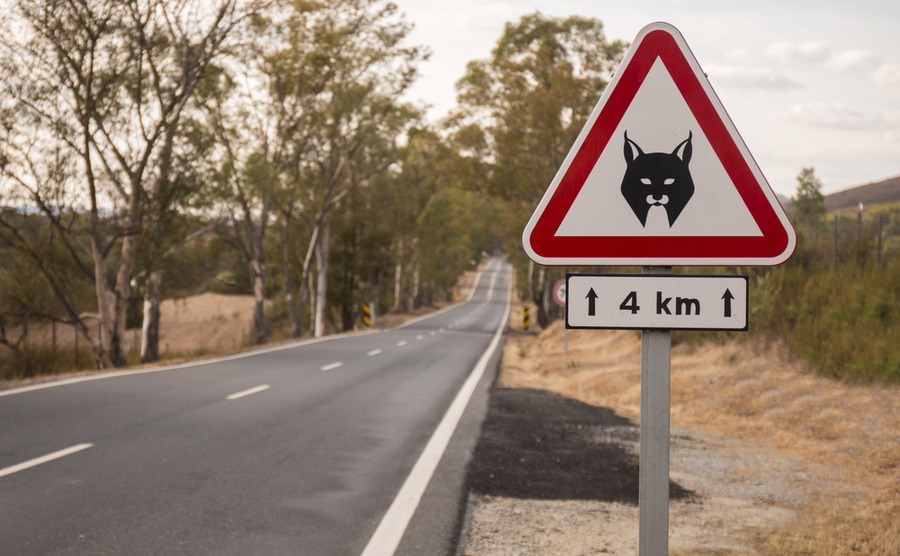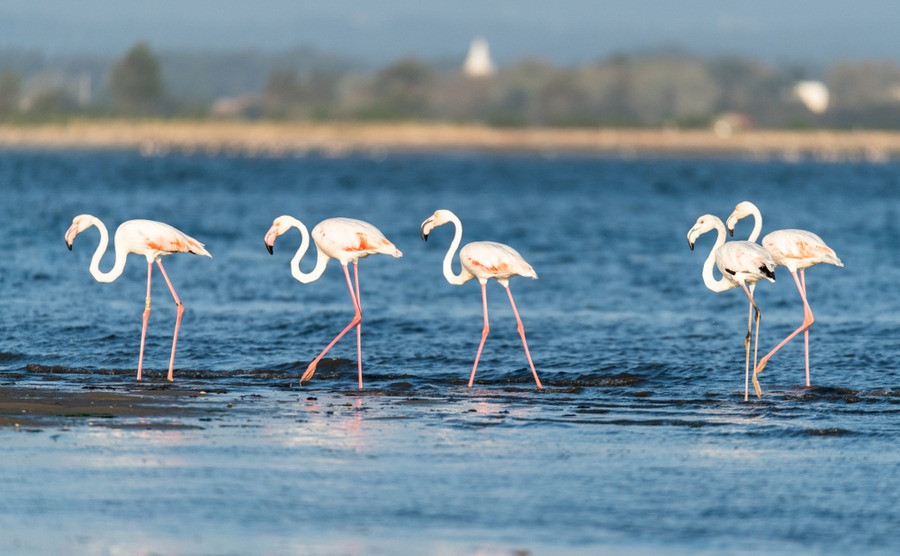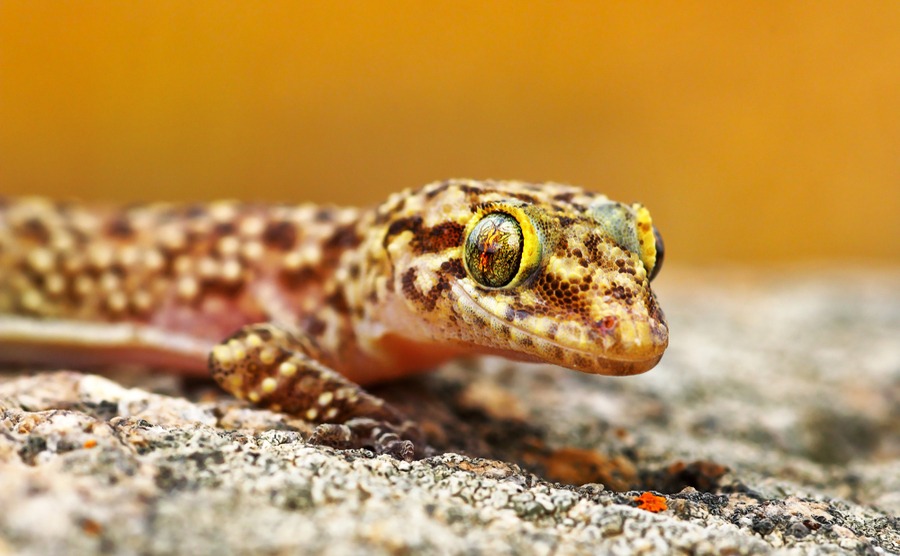Buying a home in Portugal is about more than a sparkling pool and playing golf in the sun. You’ll be part of a community and a whole new ecosystem, including the flora and fauna. If you enjoy the sights and sounds of nature, you’ll be very impressed with the variety of wildlife in Portugal. So what might you meet on a country walk?
It’s amazing how much difference a two hour flight can make; and not just when it comes to weather! The wildlife in Portugal is markedly different to what you’re probably used to seeing in the UK. With a little effort – and sometimes none at all – you can see interesting and exotic animal species across the country.
For anyone buying a home in the countryside, a dizzying array of wildlife could be dropping by. There are lynx, genets and wildcats, salamanders, red squirrels, otters, wild boars and eagles. This article looks at eight different types of wildlife in Portugal. It discusses your chances of seeing these wonderful creatures, and some perfect places to live if you want to be close to nature.
Find homes in Portugal via our property portal.
Wildlife in Portugal: Mammals
The Iberian Lynx

Do your bit to protect the willdlife in Portugal, including the endangered lynx
If mountains and seclusion appeal to you more than sand and sea, you only need venture 50 miles or so inland to find it. Many people search for a rural existence in central or northern Portugal. However, it’s worth remembering that there’s plenty of countryside in the Algarve and southern Alentejo too.
When it comes to wildlife in Portugal, the most sought-after of all is perhaps the rare Iberian Lynx. While you probably wouldn’t want to encounter one of these wild cats on a dark night, the fact you could is rather exciting.
There are thought to be fewer than 50 Iberian lynx in Portugal, in the area of the Parque Natural do Vale do Guadiana. This region is just west of the Spanish border, and north of the Algarve. Efforts to reintroduce this species to Portugal have paid off, and a new litter was born in 2018.
It’s not beyond the realms of possibility to spot one of these rare creatures. Dawn and dusk are cited as the most likely times.
FUN FACT: Experts are divided on whether the Iberian lynx is dangerous to humans. While some say they are unlikely to attack, the National Farmers Union has objected to them being introduced in the UK on safety grounds.
So what happens if you get bitten? Should you need hospital treatment, read our free Guide to Healthcare to find out about accessing medical care overseas.
Wild Ponies
Far to the north of Portugal, property is well priced and it’s possible to get a lot of sprawling land for your money. This is also an area with plenty of wildlife of its own, including the Garrano, an endangered species of wild pony.
These equine animals resemble those seen in cave paintings from the Paleolithic Period. This is therefore a breed that’s thought to have remained stable for thousands of years. This is one example of wildlife in Portugal with true history behind it.
You can find a large concentration of these wild ponies in the the Peneda-Gêres National Park. This mountain wilderness is a fabulous place for walking, and facilities including a model village. If you stray from the main paths you’re likely to see the Garrano horses, and perhaps wild cows also.
FUN FACT: There are also Iberian wolves in this area of Portugal. Don’t worry about them if you visit, as they’re in a fenced enclosure. This also protects the wild horses, who are desirable prey for the wolves.

A wolf howls in the Geres National Park
Roe Deer
A little further south in inland central Portugal, it’s not unusual to encounter roe deer. Smaller than the deer you may have seen in the UK, these animals have been the subject of successful reintroduction projects over the past 20 years.
Central Portugal is a very popular area for foreign residents, who enjoy low-cost property, stunning mountain landscapes and a traditional pace of life. If you fancy taking on a renovation project, there are plenty available in the area, often with a generous amount of land.
If you find yourself at such a property, especially in an inland area east of Coimbra, don’t be surprised to see a solitary roe deer on the premises at some point. These animals don’t tend to hang around in packs, so you will usually spot them alone. Although they’re more accustomed to the countryside, they sometimes enter more populated areas in search of food.
FUN FACT: If you’re in the Portuguese countryside and hear dogs barking, some of the sounds may, in fact be roe deer. The sound they make is very similar.
Buying a country property can raise more complicated legal issues. We can put you in touch with a carefully selected legal partners.
SEARCH for your property in Portugal
Bird Life
Swallows
One winged wonder that you see a lot of in Portugal’s Algarve is the swallow. These sensible birds arrive in February and leave as summer draws to a close, making the most of Portugal’s hot weather!
You don’t need to look far to find swallow’s nests in the Algarve. They set up their grey, cup-shaped homes under sturdy balcony railings, in ruins, and in outbuildings. The nests often appear to have several “rooms,” like something akin to an avian mansion.
If you buy a property in the Algarve, you may well realise you’re hosting your very own family of swallows when one of these nests shows up on the structure of your building. They’re a joy to watch coming and going. You often see them, with their forked tails, flying in stunning formations just before dusk.
FUN FACT: Swallows are often confused with housemartins and swifts. It doesn’t help that they often fly in formation together. While swallows and martins and hard to tell apart, swifts have distinct tails shaped like a boomerang.
Flamingoes

Flamingos on the Ria de Aveiro.
If you find yourself in the East Algarve, especially around the Ria Formosa nature reserve, there’s a good chance of spotting flamingoes. The popular town of Tavira is a good place to start looking – but not in the town itself! You will often see flamingoes randomly if you go for a walk to the shore through the salt pans. The area is so well-known for the beautiful birds that there’s a bar in the town centre named “The Pink Flamingo!”
You can see flamingoes around Tavira, and in other places such as Castro Marim and Santa Luzia, all year round. However, due to migratory patterns, spring and autumn give you the best chance. A long walk around the Ria Formosa gives you a good choice of spotting them flamingoes, but a boat trip is another option. Local knowledge of the area and communication between boatmen means they are the best people to point you in the direction of the birds at any time.
The area around the Ria Formosa, especially Tavira and Cabanas, is very popular with overseas residents. It’s also a hit with people from elsewhere in Europe who wish to winter somewhere warm.
FUN FACT: Even though most people think of flamingoes as pink, the species gains this colour over time as a result of algae and diet. Most of the flamingoes you spot in Portugal are actually white.
Smaller Creatures in Portugal
Lizards and Geckos

Make friends with the Mediterranean House Gecko
Lizards and geckos are very common in Portugal. However, they like the heat, so you’re more likely to see them the further south you venture.
It’s not at all unusual to encounter a gecko flitting across an outside wall while you’re outside enjoying a barbecue in the Algarve sunshine. While many people find this particular wildlife in Portugal cute and endearing, others aren’t a fan of these creatures’ ability to make you jump!
The most common of these reptiles in Portugal is the Mediterranean House Gecko, also called the Moon Lizard. They are tiny and short. Thanks to their speed, agility and pesticide resistance, they can seem almost indestructible.
FUN FACT: Geckos are viewed as a good luck symbol by many. However, the superstitions around them are rather convoluted in some cultures. Bad luck is associated with them landing on a left shoulder, and in India, the sounds they make are seen as a “bad omen.”
Crickets
One of the most wonderful things about buying a property in Portugal is stepping outside at dusk to the sound of thousands of chirping crickets. For many, this is the sound of holidays, and it’s used to invoke feelings of warm countries in numerous movies.
Crickets are very common in Portugal and there are many different species, including the House Cricket and the Mediterranean Field Cricket. The size of some of these bugs can some as quite a surprise. Most crickets are a maximum of around four centimetres long, but there are larger specimens among over 2000 different varieties.
Another thing that you soon learn as a new resident in Portugal is how much noise a single cricket can make. This is especially true if it finds itself inside your home! Locating them and persuading them to leave can turn into a fun game as they can jump an awfully long way!
FUN FACT: Cricket’s ear are located in their front legs.
If you’ve tried to catch a cricket you’ll know that they’re slippery customers, leaping off just as you get close. The value of the pound is a bit like at the moment! To get control over your currency and prevent the risk of losing thousands, contact Smart Currency Exchange.
Sea Creatures in Portugal
The Portuguese coast is rich in sea life. There are scuttling crabs on the beaches, large and beautiful fish to wow divers and snorkelers, and shoals of bass and bream that sell in great numbers in the local markets.
For one great example of Portuguese sea life, head to Praia de Dona Ana, a “picture postcard” beach in the West Algarve city of Lagos. Here, bobbing among the boat trip vessels and swimmers, you often see the tops of numerous snorkels.
These snorkels don’t belong to people seeing the underwater sights. These individuals are fishing for the large squid that frequent the waters. Often the tourists in the boats are very surprised to see the snorkelers suddenly wrestling the sea creatures!
If you decide you’d like to stay longer, Lagos is a perfect place for a holiday home. Sea view apartments overlooking this very beach start from around €180,000.
FUN FACT: Squid blood is blue and not red, because it contains copper.
This article gives just a glimpse of the varied wildlife in Portugal – there’s plenty more to discover. For information on buying a property in Portugal, click here.










